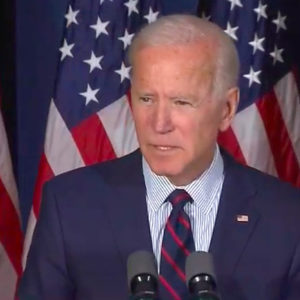Democratic presidential candidate Joe Biden’s broadband plan would promote the growth of government-owned networks, which studies by the Taxpayers Protection Alliance (TPA) have shown to be bad news for taxpayers.
Biden recently released his agenda on his website as he gears up for the November presidential election against President Trump. A healthy part of the section on infrastructure delves into Biden’s broadband goals.
While the former vice president holds the admirable goal to “bring broadband to every American household,” critics might question his methods. Biden says he will direct the National Telecommunications and Information Administration and the Department of Agriculture (USDA) “to support cities and towns that want to build municipally owned broadband networks.”
This would be similar to the approach taken in the 2019 American Recovery and Reinvestment Act (aka the stimulus bill) in which billions of dollars were spent and wasted.
The TPA has written extensively about the dangers of municipal broadband, including the recent report “GON with the Wind: The Failed Promise of Government Owned Networks Across America” that highlighted a number of failed taxpayer-funded projects.
TPA highlighted more of them on its website “Broadband Boondoggles.” These examples show that government efforts to build their own high-speed internet systems often result in residents paying for a service they don’t use — or even want.
Jeffrey Westling, a fellow in innovation and technology policy at the Libertarian-leaning R Street Institute, told TPA that Biden’s plan would put taxpayers at risk by promoting the construction of government-owned networks, especially if those systems don’t get the promised take rates needed to break even, an issue with many of the projects highlighted in the TPA report.
“Your taxes are going to go up or you’re going to lose services in other areas” to make up the shortfall, Westling noted.
On the other hand, government can play a useful role in the promotion of broadband, such as installing conduit, loosening regulations and offering incentives to private providers, he said.
“There’s a better way of doing this that doesn’t put taxpayers at risk,” Westling said.
Biden’s broadband agenda also includes the following plans:
— Spending an additional $20 billion in rural broadband infrastructure, in large part by tripling the size of the USDA Community Connect grant program.
— Making available federally controlled telecom resources such as towers, poles and rights-of-way to facilitate broadband growth.
— Working on reform for the Federal Communication Commission’s Lifeline program. Biden says he will encourage the participation of more providers, reduce fraud and abuse, and offer more subsidies.
— Promoting the passage of the Digital Equity Act, which would require the National Telecommunications and Information Administration to establish grant programs — more taxpayer money — to promote digital equity, support digital inclusion activities and work with states to increase broadband adoption by their residents.
Westling said broadband grant programs can work as long as resources are allocated to the correct places. A constant struggle in expanding broadband infrastructure is hitting truly unserved or underserved areas rather than overbuilding in areas that already have access, a problem that the FCC is now attempting to tackle.
“You need to have a good understanding of the community and the available access,” he said. “For those without access, grant programs are going to be great.”

